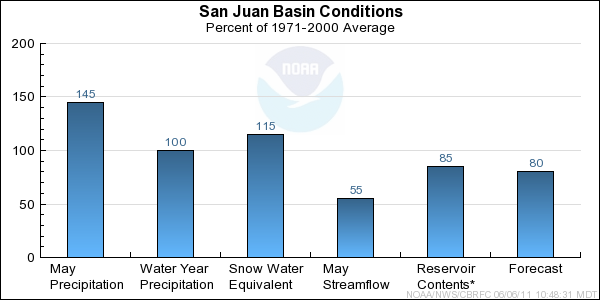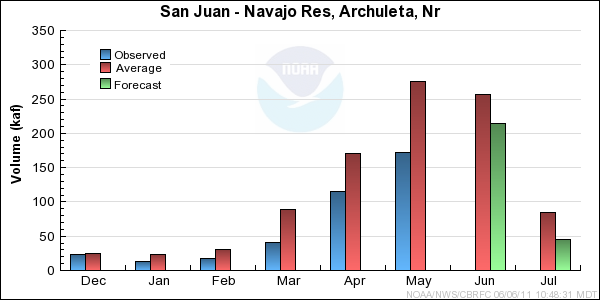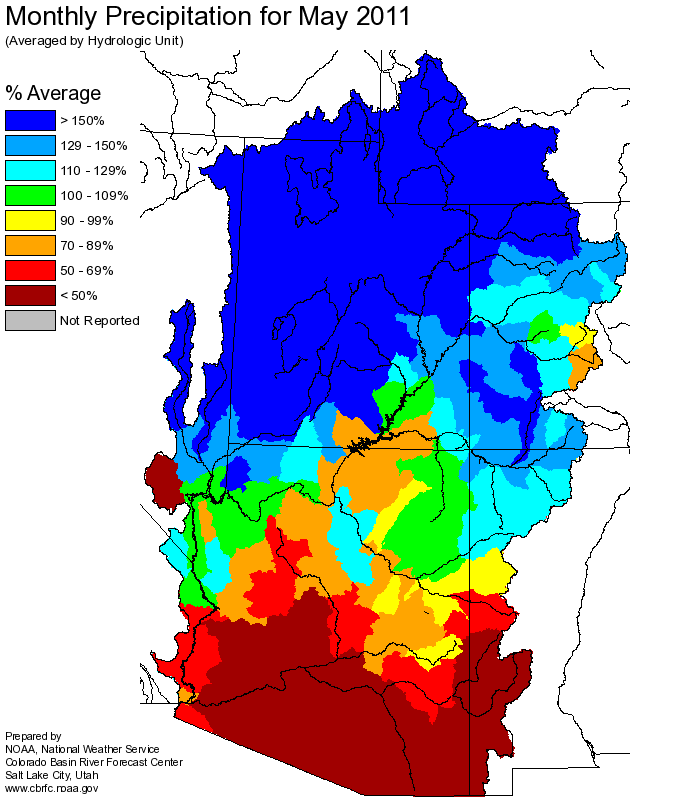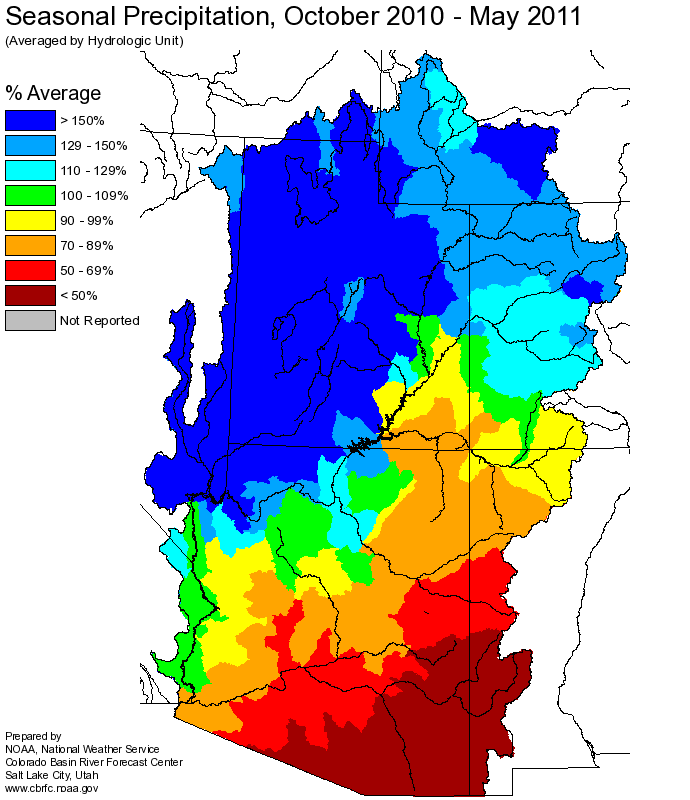The following conditions influenced this month's forecasts:
Precipitation:
Seasonal October through May precipitation was 100 percent of average, up 5
percent from last month.
May
precipitation was 145 percent of average, which was much above average.
Snow:
Current snow water equivalent for the entire basin is 115 percent, which is above average. The Animas basin is
135 percent and above Navajo is 100 percent. All three are up from the May 1st percentages.
--- Animas River Basin
Snow Plot.
--- Above Navajo Basin
Snow Plot.
Streamflow:
Streamflow for the entire San Juan Basin was much below average for May at 55%. Seasonal streamflow since October
continued to be much below average at 60%, due to the much below average fall precipitation.
Soil Moisture:
Modeled
soil
moisture as of November 1st, 2010 was average to below average across the entire San Juan Basin.
Climate Forecasts:
The correlation of La Nina and April through July water volumes in the San Juan basin does suggest slightly drier than average December through May precipitation,
but it did not influence the June forecast process.
Forecast Summary:
The April-July
forecast volumes went up 5% from last
month due to the much above average precipitation in May. Forecast volumes for June
range between 69 and 102 percent of average with a median value of 80%.
Differences between the full period forecasts and the residual forecasts may not exactly equal the actual observed volumes due to rounding conventions (see Definitions section).








